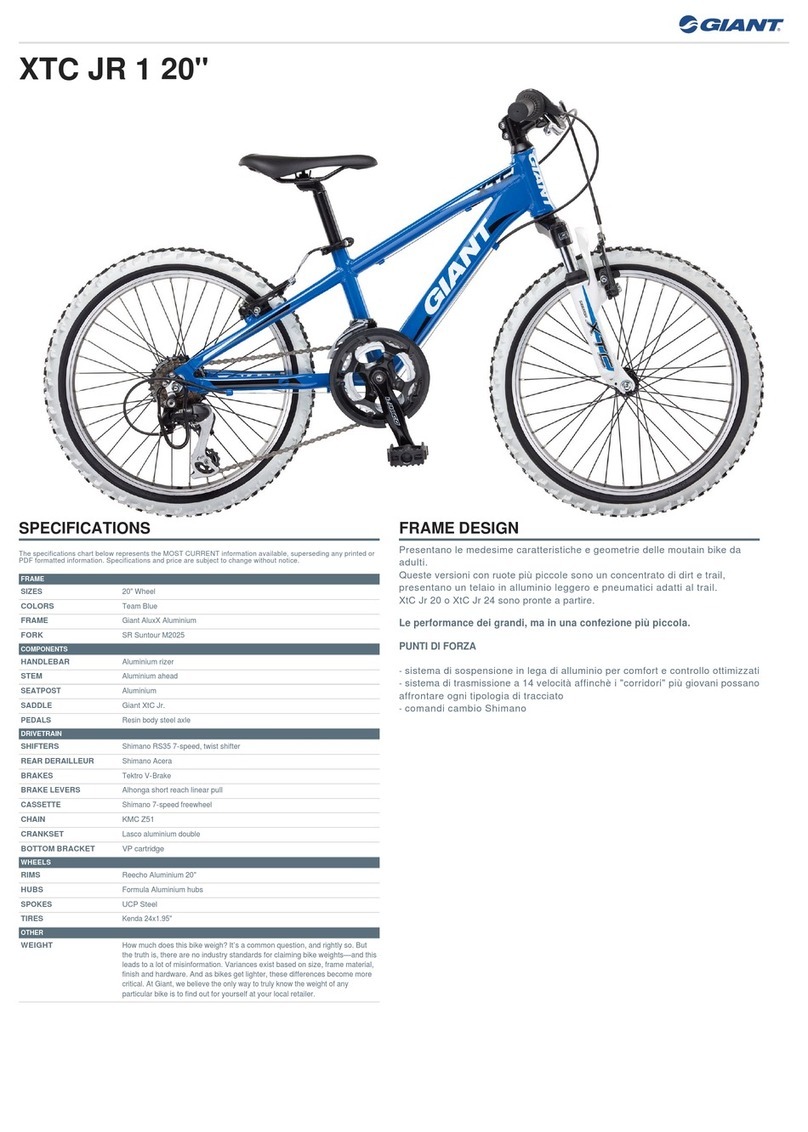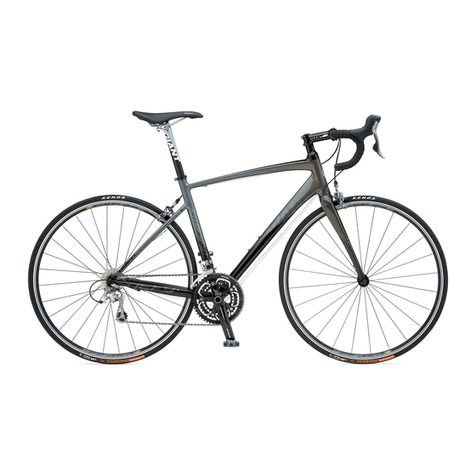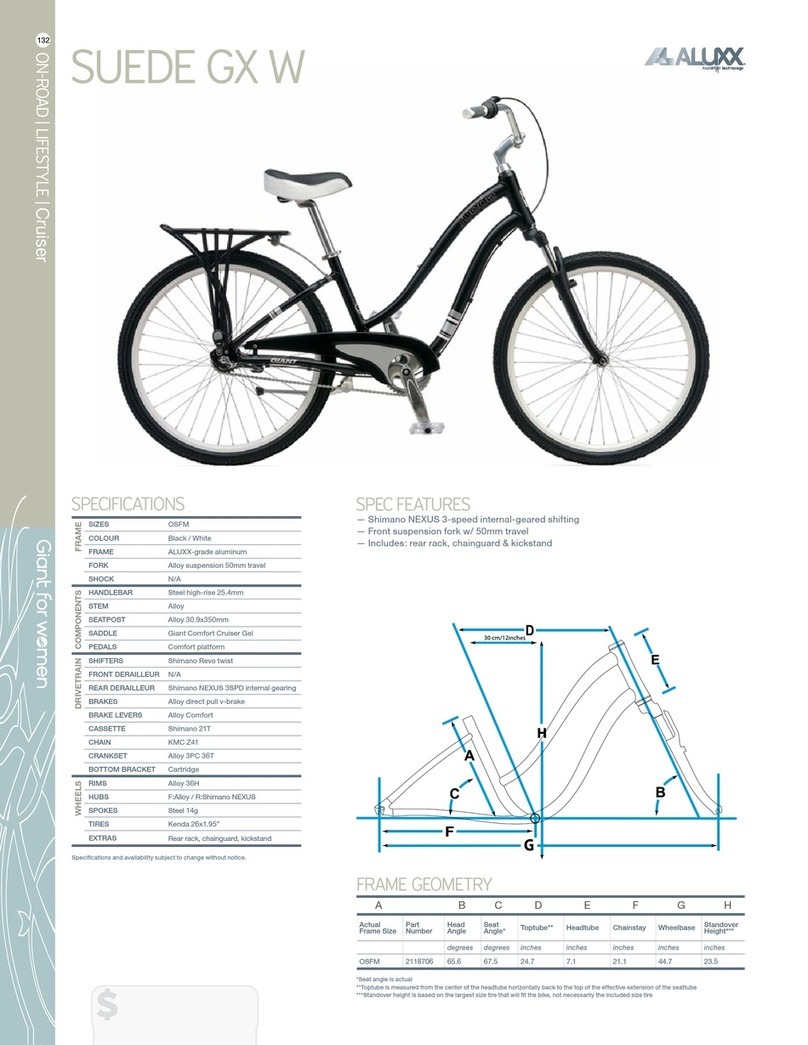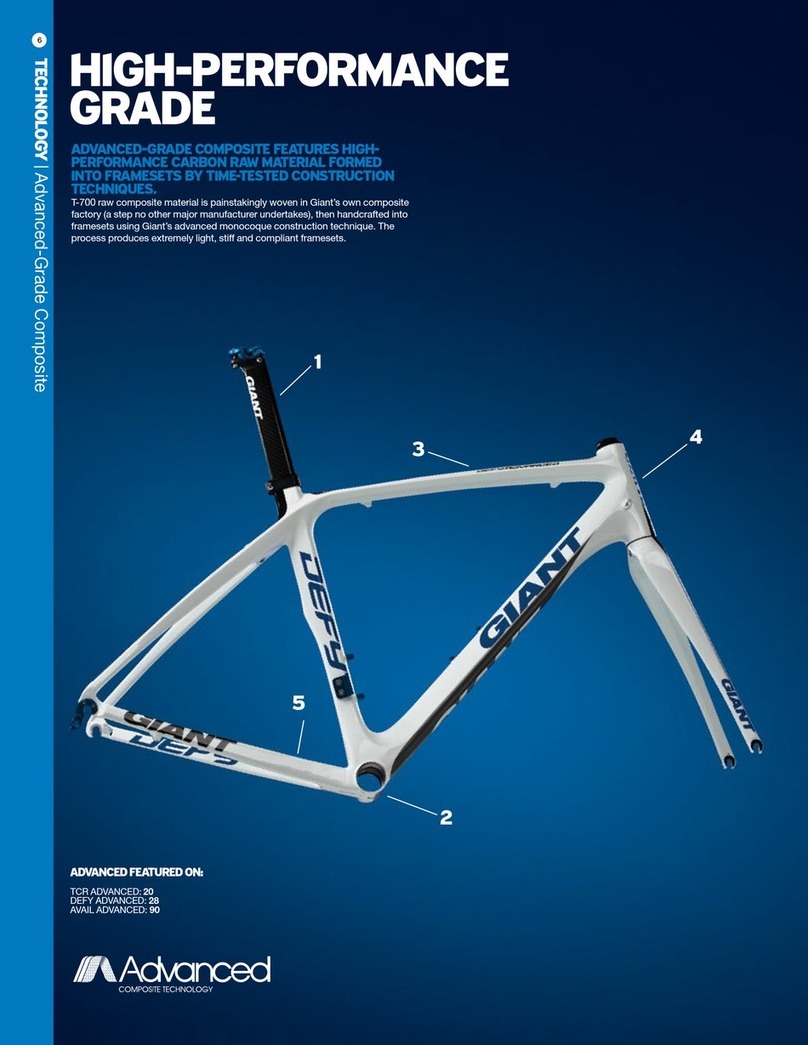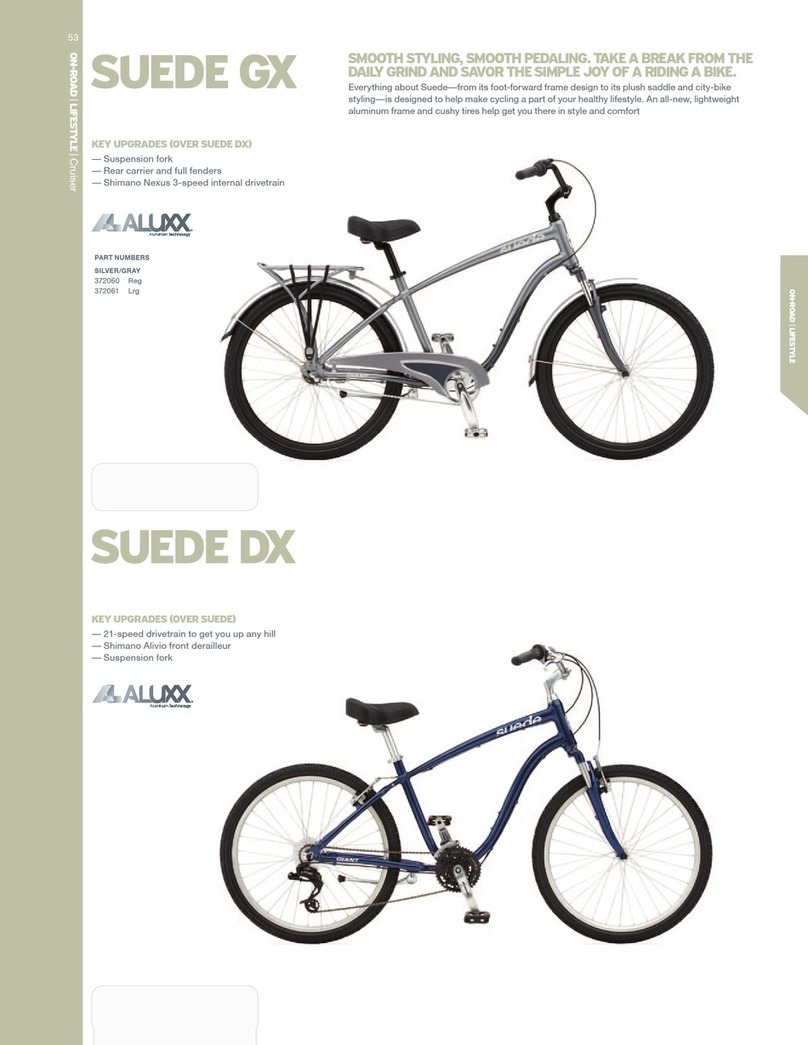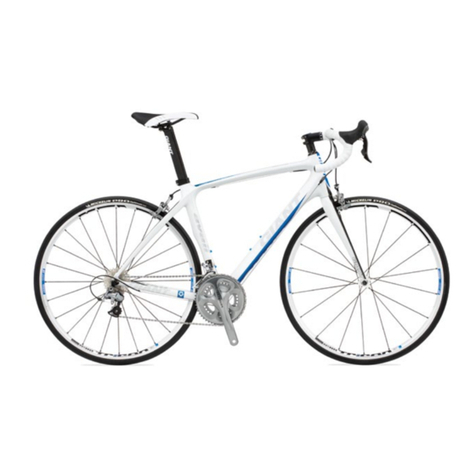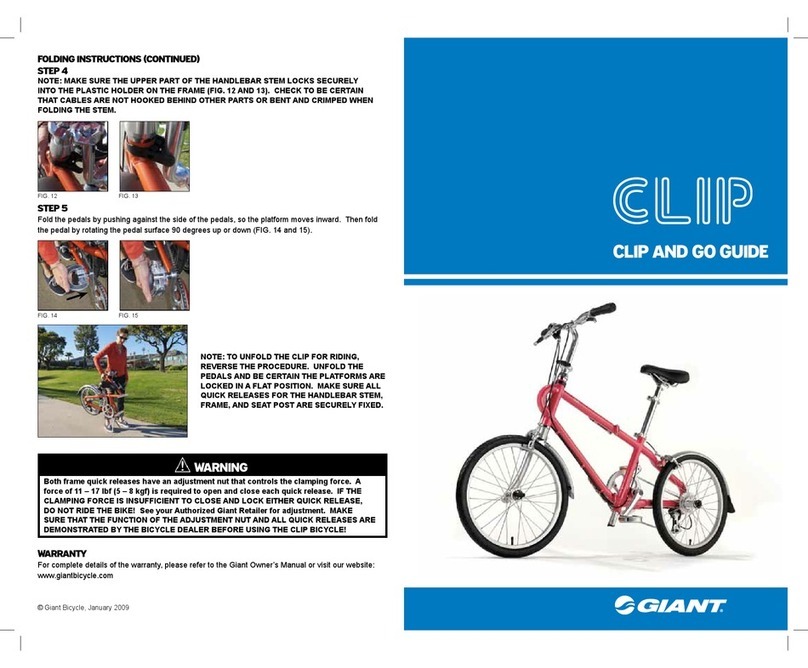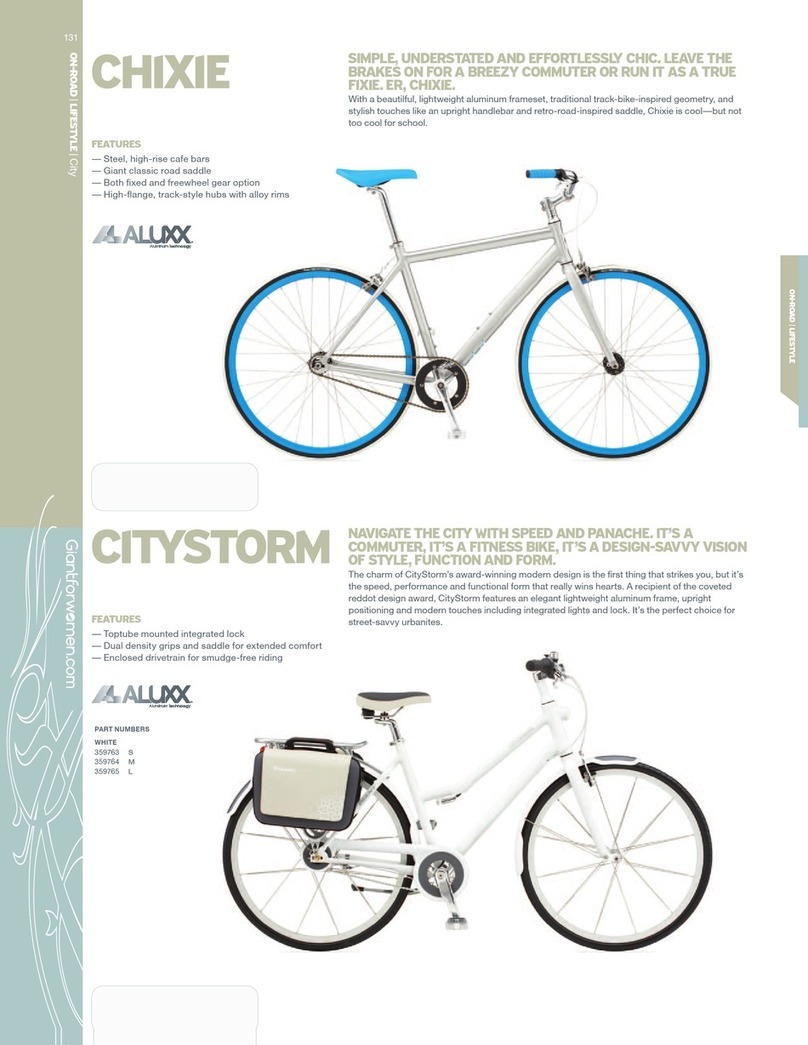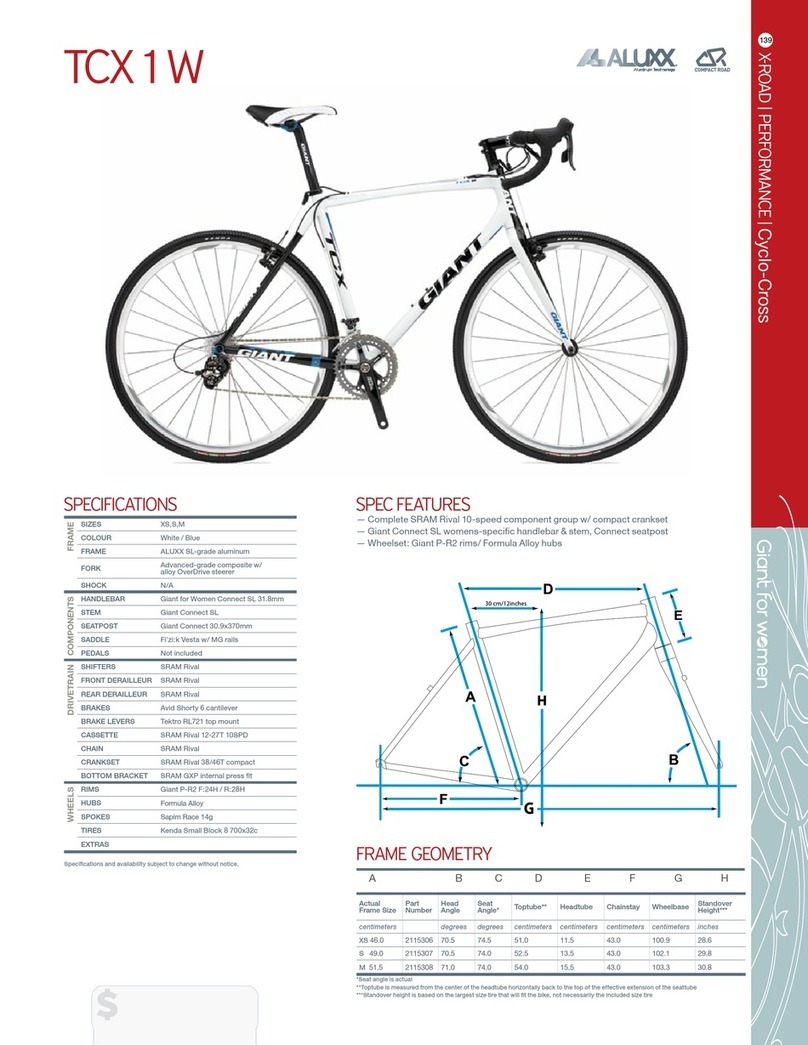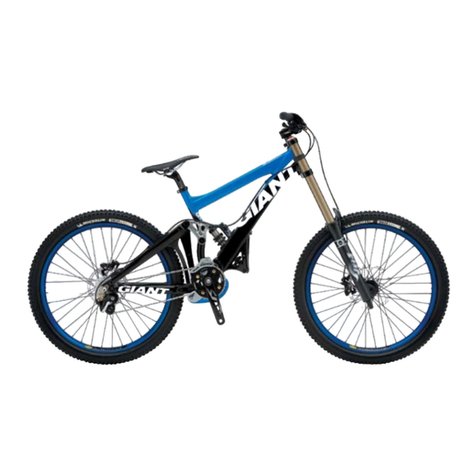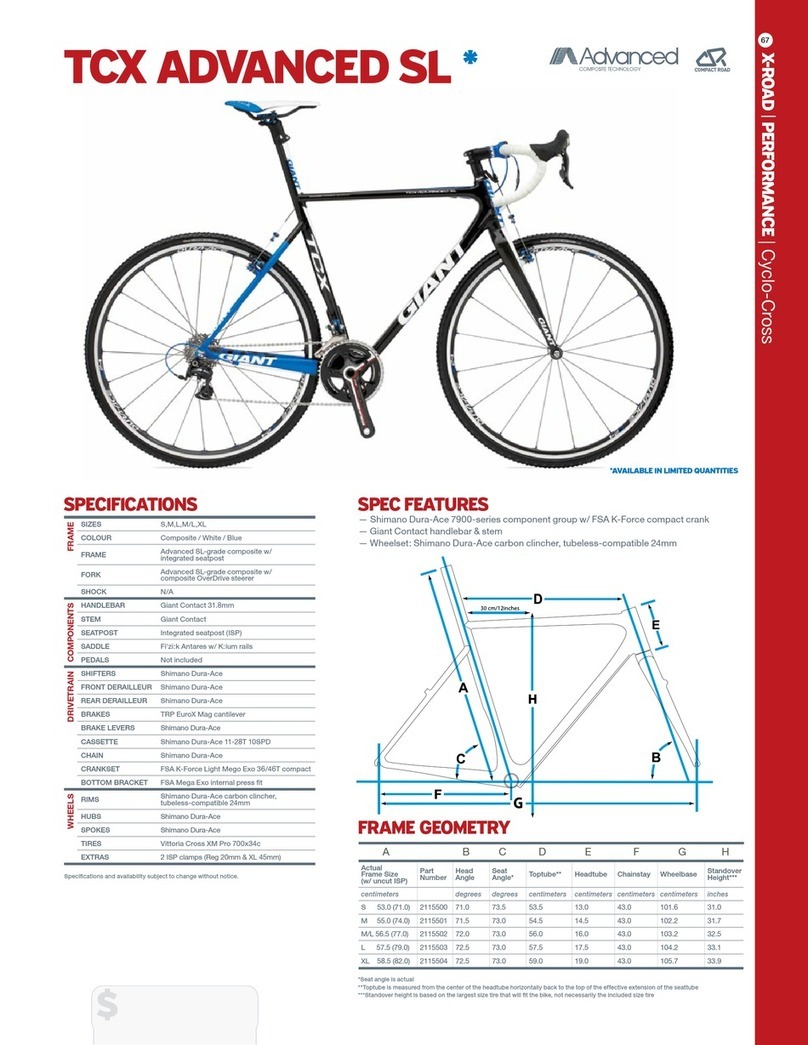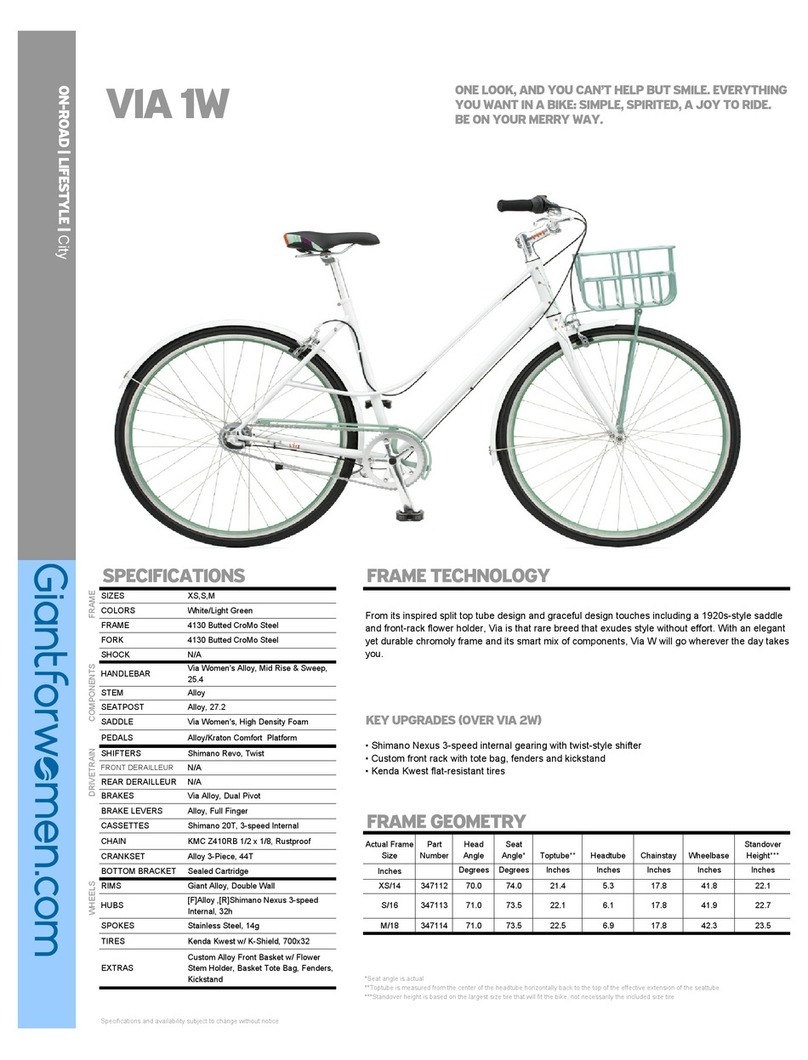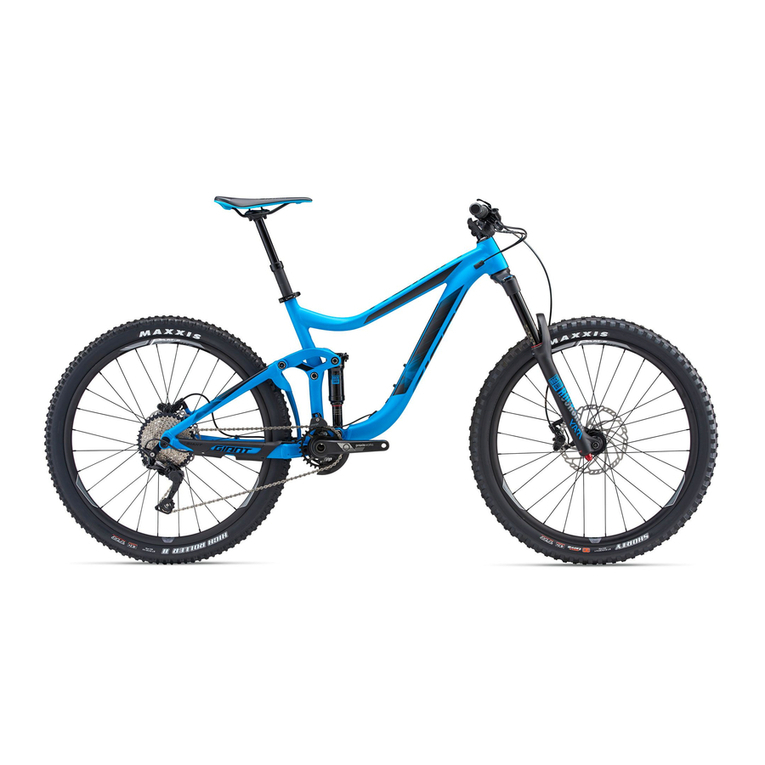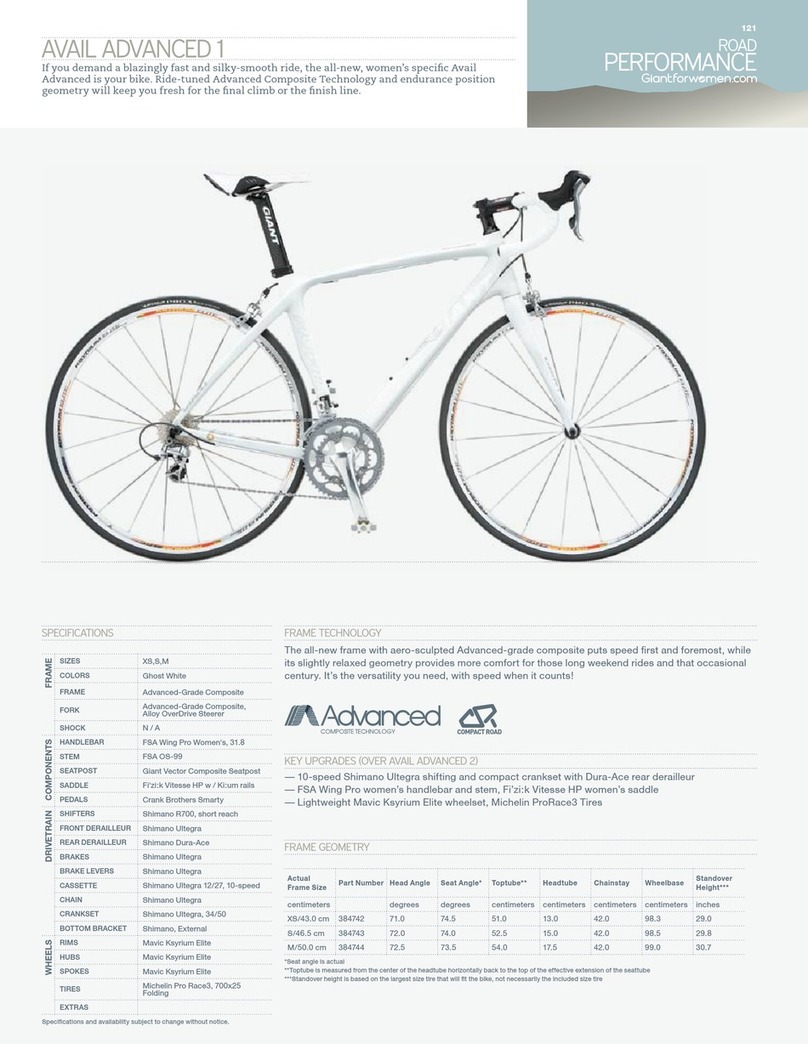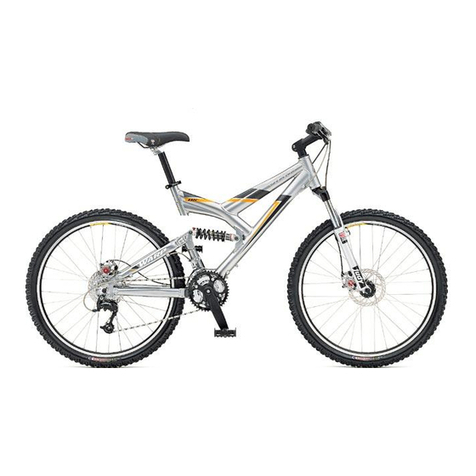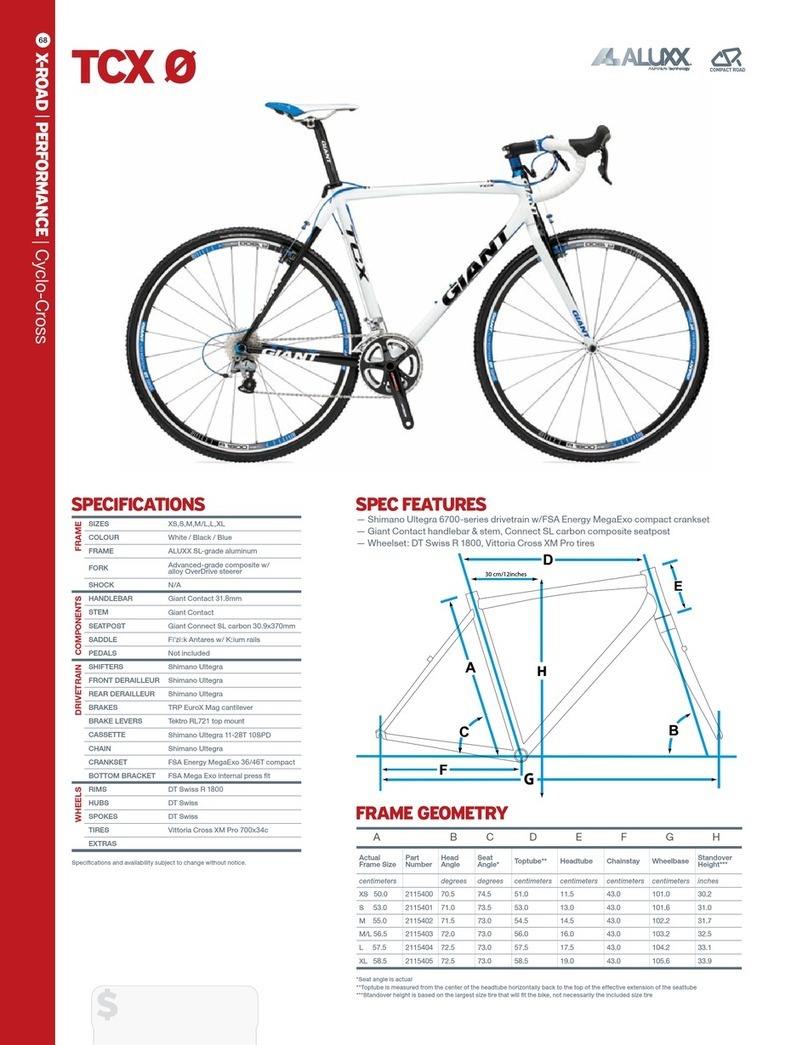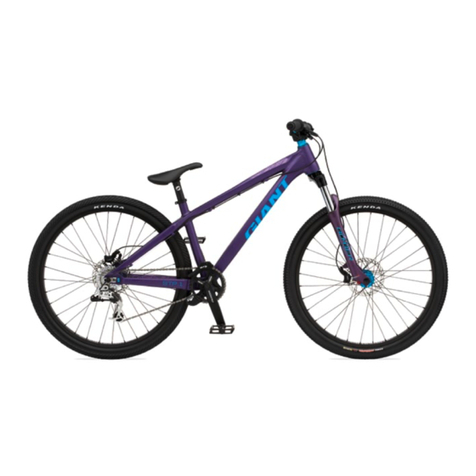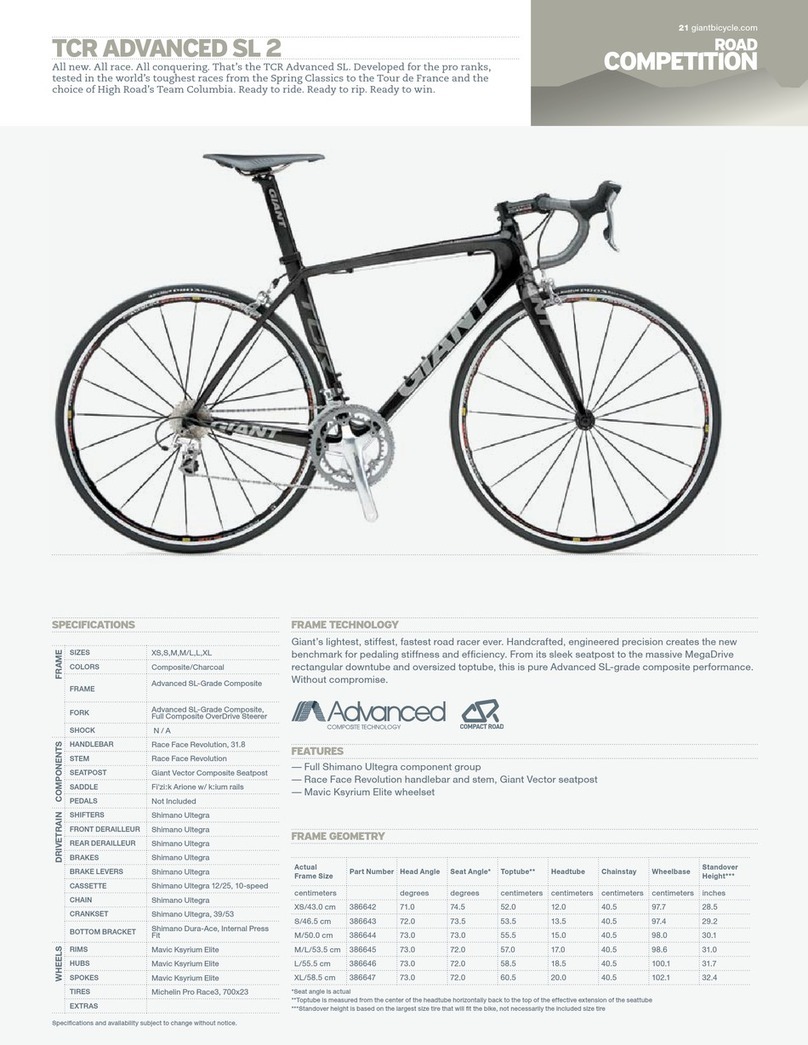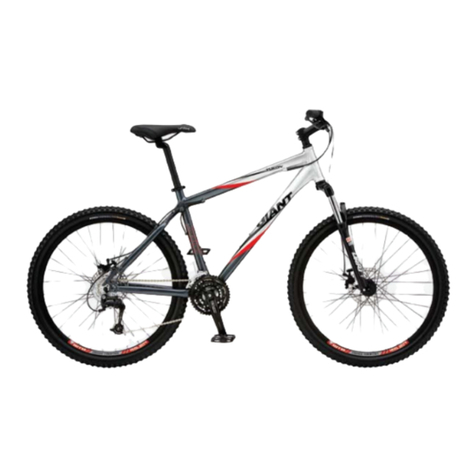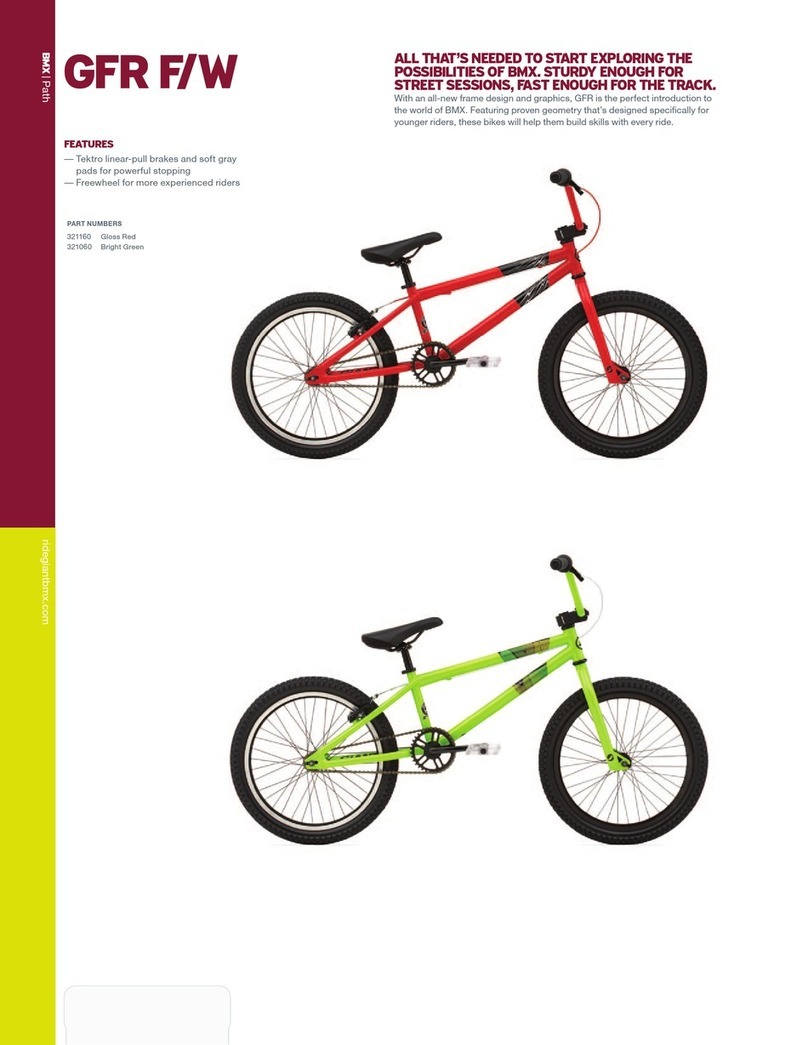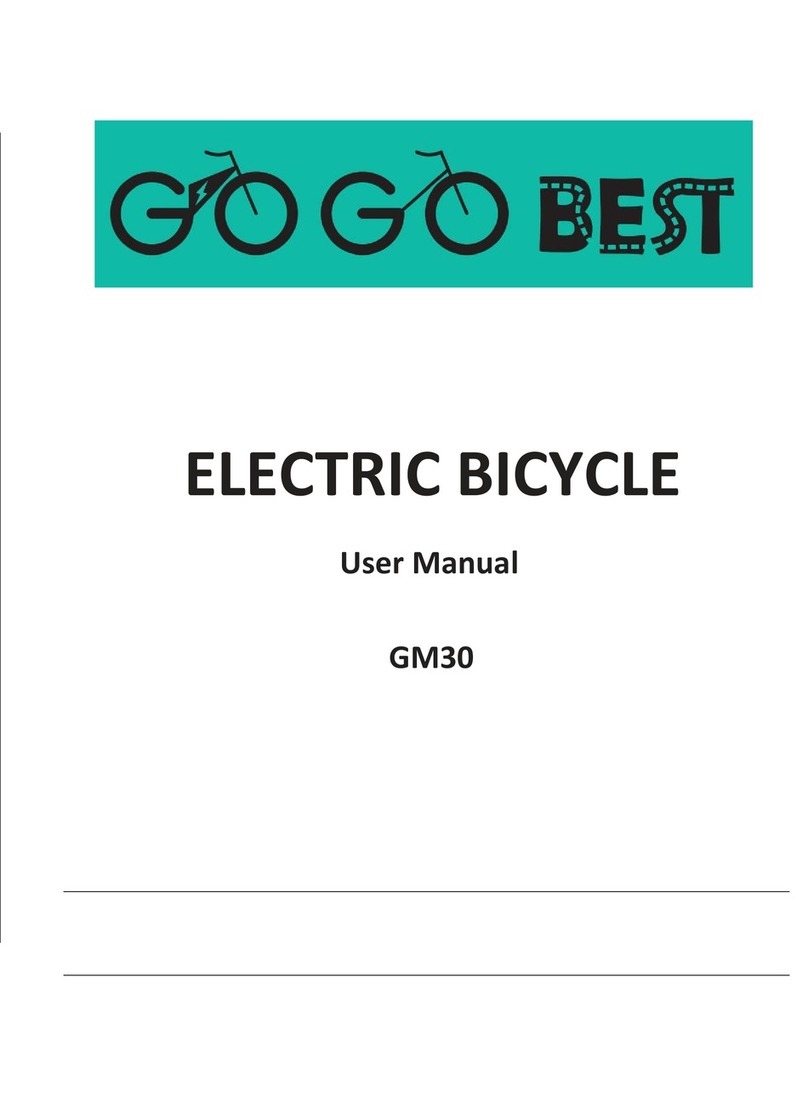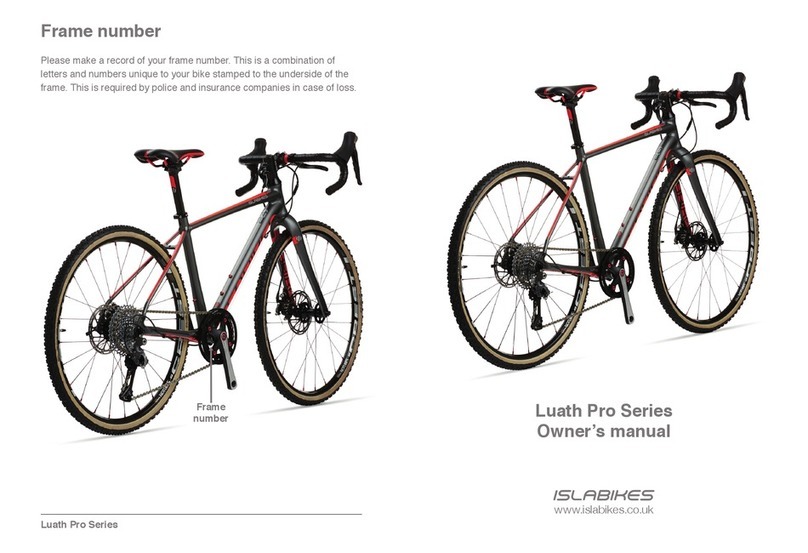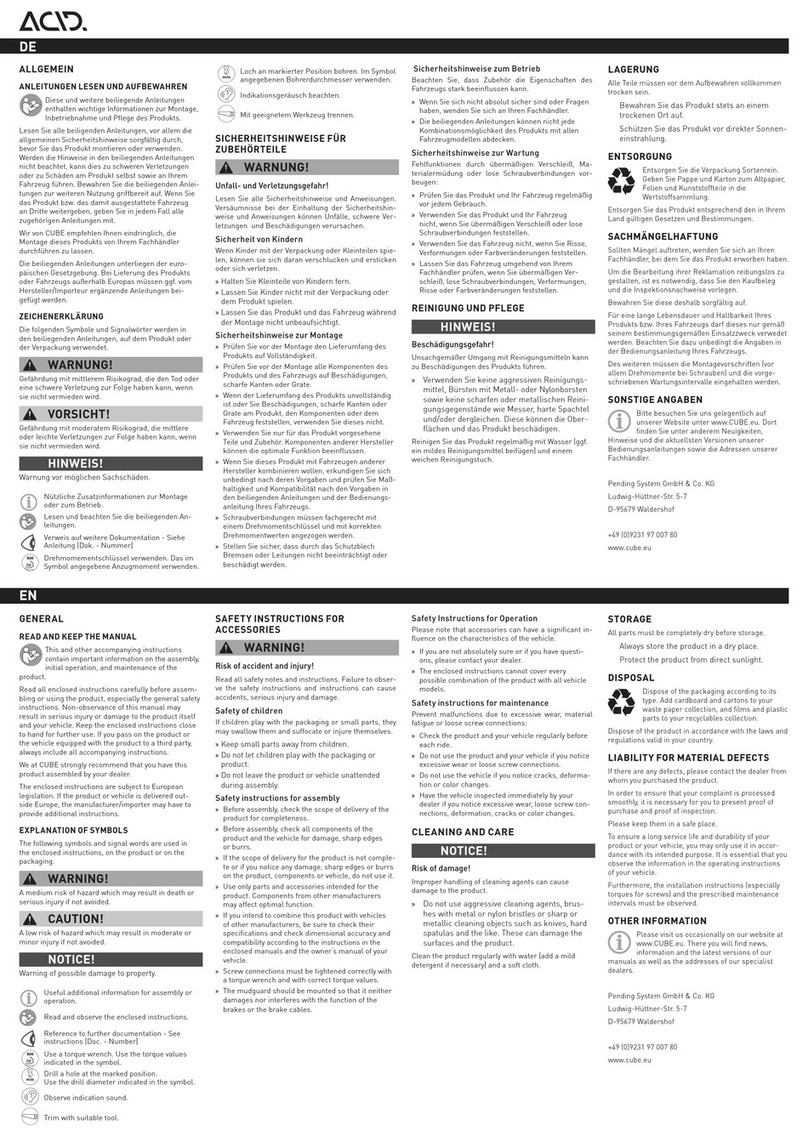4
C. Mechanical Safety Check
Routinely check the condition of your bicycle before every ride.
Nuts, bolts screws & other fasteners: Because manufacturers use a wide
variety of fastener sizes and shapes made in a variety of materials, often
differing by model and component, it is not possible for this Manual to specify
correct torque (tightening force) for the fasteners on your bicycle. We can tell
you the importance of correct torque, but not the specic torque required for
each fastener on your bicycle. To correctly torque a fastener, a torque wrench
must be used. A professional bicycle mechanic with a torque wrench should
torque the fasteners on you bicycle. If you choose to work on your own
bicycle you must get correct tightening torque specications from the bicycle
or component manufacturer or from your dealer. If you need to make an
adjustment at home or in the eld, we urge you to exercise care, and to have
the fasteners you worked on checked by your dealer as soon as possible.
WARNING: Correct tightening force on fasteners –nuts, bolts, screws–
on your bicycle is important. Too little force, and the fastener may not hold
securely. Too much force, and the fastener can strip threads, stretch, deform
or break. Either way, incorrect tightening force can result in component
failure, which can cause you to loose control and fall.
Make sure nothing is loose. Lift the front wheel off the ground by two or
three inches, then let it bounce on the ground. Anything sound, feel or look
loose? Do a visual and tactile inspection of the whole bike. Any loose parts
or accessories? If so, secure them. If you’re not sure, ask someone with
experience to check.
Tires & Wheels: Make sure tires are correctly inated (see Section 4.G.1).
Check by putting one hand on the saddle, one on the intersection of the
handlebars and stem, then bouncing your weight on the bike while looking at
tire deection. Compare what you see with how it looks when you know the
tires are correctly inated; and adjust if necessary.
Tires in good shape? Spin each wheel slowly and look for cuts in the tread
and sidewall. Replace damaged tires before riding the bike.
Wheels true? Spin each wheel and check for brake clearance and side-to-
side wobble. If a wheel wobbles side to side even slightly, or rubs against or
hits the brake pads, take the bike to a qualied bike shop to have the wheel
trued.
CAUTION: Wheels must be true for the brakes to work effectively.
Wheel truing is a skill which requires special tools and experience. Do not
attempt to true a wheel unless you have the knowledge, experience and
tools needed to do the job correctly.
Wheel rims clean and undamaged? Make sure the rims are clean and
undamaged along the braking surface, and check for excess rim wear.
Brakes: Check the brakes for proper operation (see Sections 4.C).
Squeeze the brake levers. Are the brake quick-releases closed? All control
cables seated and securely engaged? Do the brake pads contact the wheel
rim squarely and make full contact with the rim? Do the brake pads touch the
